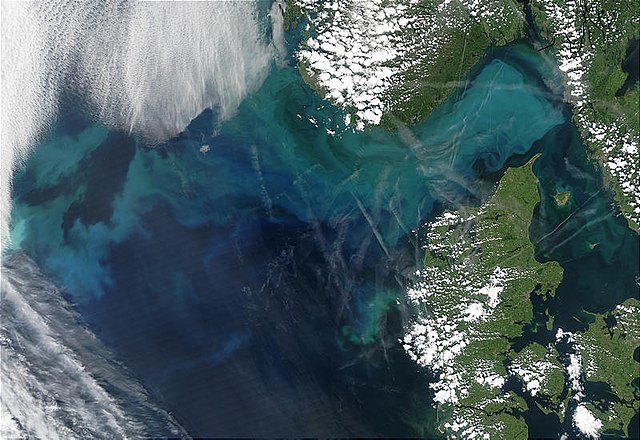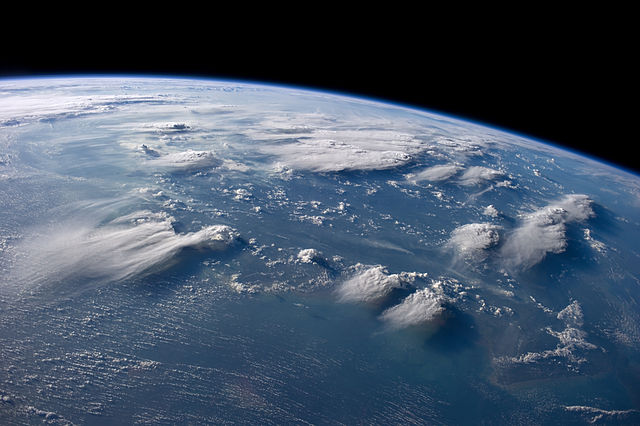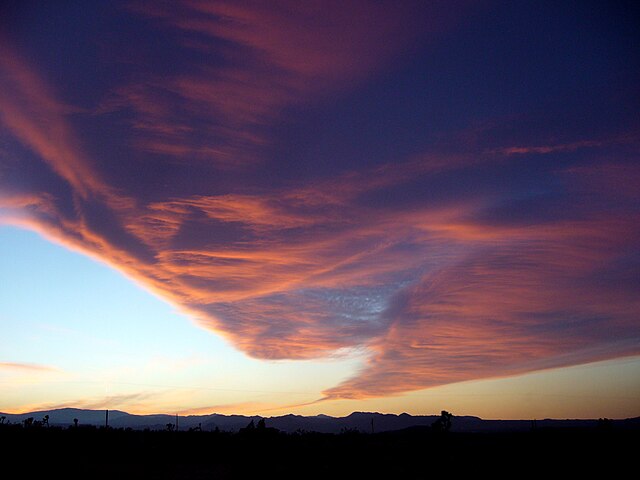Cloud condensation nuclei
Cloud condensation nuclei (CCNs), also known as cloud seeds, are small particles typically 0.2 μm, or one hundredth the size of a cloud droplet. CCNs are a unique subset of aerosols in the atmosphere on which water vapour condenses. This can affect the radiative properties of clouds and the overall atmosphere. Water vapour requires a non-gaseous surface to make the transition to a liquid; this process is called condensation.
Aerosol pollution over northern India and Bangladesh (Satellite image by NASA)
Phytoplankton bloom in the North Sea and the Skagerrak – NASA
Volcanic ash and gas emissions from Alaska's Pavlof Volcano —NASA
In meteorology, a cloud is an aerosol consisting of a visible mass of miniature liquid droplets, frozen crystals, or other particles suspended in the atmosphere of a planetary body or similar space. Water or various other chemicals may compose the droplets and crystals. On Earth, clouds are formed as a result of saturation of the air when it is cooled to its dew point, or when it gains sufficient moisture from an adjacent source to raise the dew point to the ambient temperature.
Cloudscape over Borneo, taken by the International Space Station
Windy evening twilight enhanced by the Sun's angle, can visually mimic a tornado resulting from orographic lift
Cirrus fibratus clouds in March
High cirrus upper-left merging into cirrostratus right and some cirrocumulus far right







